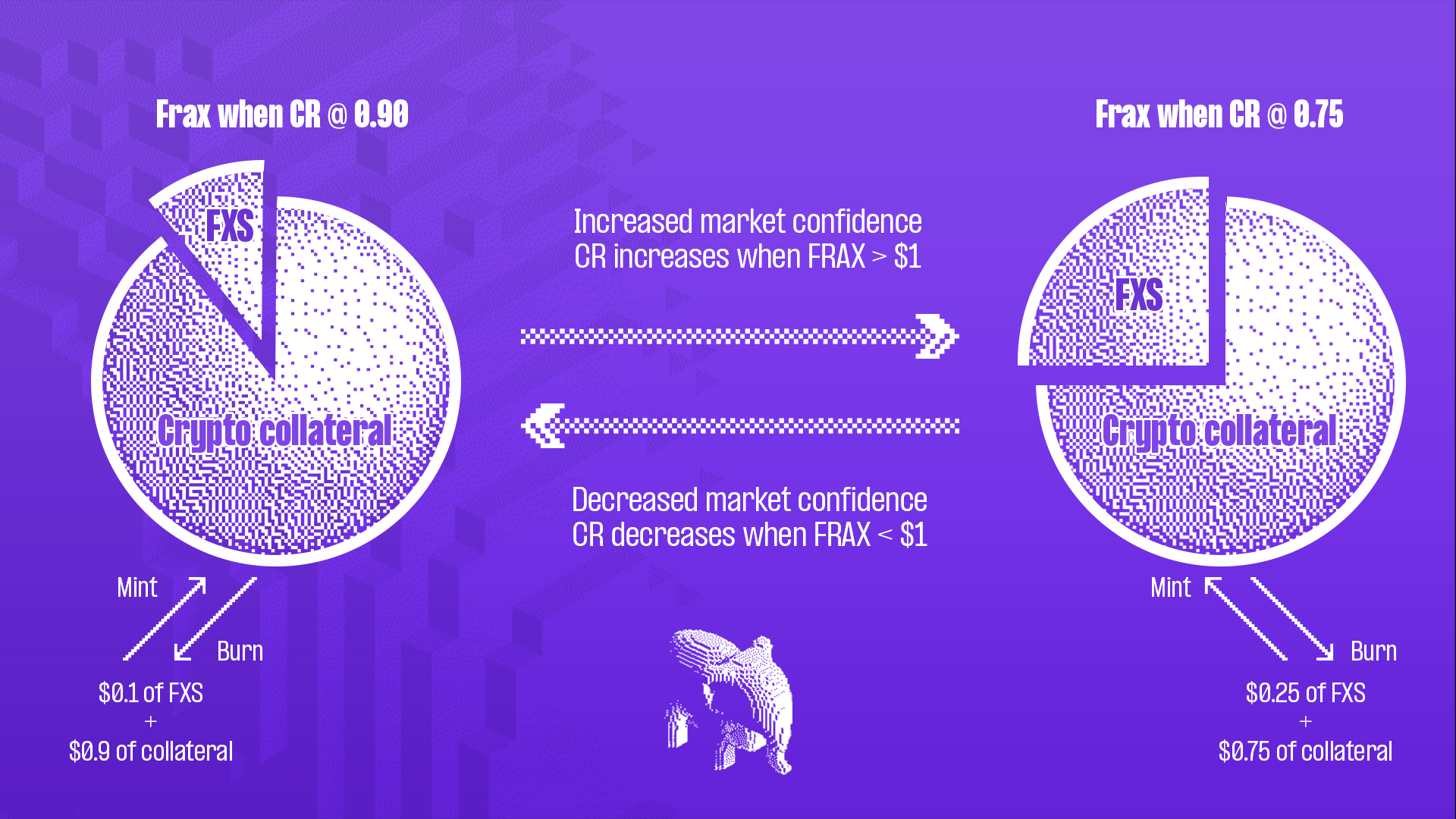Stablecoins are hugely important in DeFi. They provide a reference against which more volatile cryptocurrencies are traded whilst also acting as safe havens for investors in times of market crashes.
The most secure stablecoins are generally fully-backed, either by fiat or cryptocurrency. However, this introduces problems such as the requirement for trust in a centralised issuer (for fiat-backing) or over-collateralisation (for volatile crypto-backing), which limits scalability.
Alternatively, stablecoins may rely on algorithmic stabilisation via smart contracts, instead of backing. This is usually achieved by incentivising users to mint new coins at a (favourable) rate when the value exceeds the target price. The resulting increase to the overall supply of coins balances the price back to the target. The same process works in reverse, with users burning coins when the price drops below peg. While being highly scalable, algorithmic stablecoins have a history of failing spectacularly, and are often seen as experimental and rather risky.
Frax Finance relies on a combination of these two methods to balance its dollar-pegged stablecoin, FRAX. The model aims to promote scalability and stability whilst remaining true to the key DeFi tenets of decentralisation and trustlessness.
FRAX tokens are partially backed by the Frax governance token, FXS, with the proportion set by the current Collateralisation Ratio (CR). For example, at a CR of 0.9, each FRAX token is backed by $0.10 worth of FXS tokens and $0.90 of other crypto collateral.
Initially, the non-FXS collateral was limited to USDC, another well-established dollar-pegged stablecoin. However, as Frax has grown, it has added AMOs as backing, which are autonomous, yield-generating smart contracts, containing a variety of collateral types.
In order to maintain FRAX at its peg of exactly $1.00, Frax employs the system of mint/burn arbitrage described above, with users depositing or receiving the split of FXS and other assets dictated by the current CR.
The Collateralisation Ratio changes according to the demand for FRAX, moving in increments of 0.25% each hour. This results in a lower Collateralisation Ratio during periods of higher demand, and vice versa — reflecting the fact that users are more confident in the protocol’s algorithmic backing during periods of expansion, and rely on the safety of higher collateralisation when FRAX trades below peg.
As founder Sam Kazemian puts it: ‘This simple concept allows the protocol to ask the market "just how much supply of money are you ok with being unbacked?"’.

Frax also produces another token, FPI, which has the same underlying mechanisms as FRAX, but is pegged to the US Consumer Price Index, rather than the US dollar. In addition to the two stablecoins, the wider Frax ecosystem includes a lending protocol (Fraxlend), an AMM (Fraxswap), and a liquid ETH staking service (frxETH).
As well as collateralising FRAX, FXS can be staked as veFXS, giving the user the right to vote on governance proposals. veFXS holders also receive boosted yields and earn a share of the protocol fees (generated from mint/burn fees, FraxSwap and FraxLend fees and AMO surpluses).
Stake DAO’s FXS Liquid Locker ensures that all depositors get the maximum benefits of veFXS without the need to lock up tokens.



